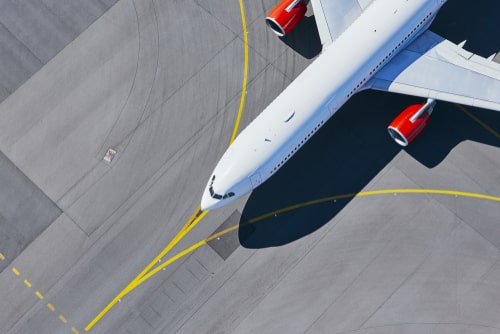
Covid-19 has grounded most carriers’ fleets, creating a new ‘week-zero’ for the aviation industry in which aircraft are stored in multiple locations, airlines are seeking payment relief from leasing companies and they in turn are seeking debt relief from financial institutions.
Manufacturers, locked down like the airlines, are concerned about the viability of future order books, and the whole industry is concerned about the unlocking of economies combined with the ongoing demand for business and leisure travel by customers.
The pandemic is truly a ‘connected risk’ that has paralysed both the service chain and supply chain. An increased perception of this kind of connected risk exposure has elevated discussion to the c-suite of companies around what we should now consider remote risks to be and the volatility associated with such risks.
For the insurance industry, underwriting has until now tended to focus on data describing risk exposures, rather than event exposures per se. These typically dwell upon a client’s share of historic losses, but the debate has been loss experience adjusted for expected exposure rather than expected exposure adjusted for loss experience.
Insurers will need to know the effect on their portfolios of the week-zero and their ‘return-to-flight’ exposure positions. The return-to-flight is particularly difficult to discern because economies will unlock at different rates, as will passenger demand, meaning that there is a need for better business insight and data collection as economies emerge from their enforced paralysis.
Using transponder data to establish the last-ping location of global airlines’ fleets over the course of the first third of 2020, we see that at 70% of the worlds commercial fleets were grounded. This we can refer to as week-zero, Thursday 30th April 2020.
In the ISO Week Date Calendar format, Thursday 30th April 2020 is Week 18 Day 121 Year 2020. The first case of Covid-19 reported to the World Health Organisation (WHO) was on the 31st December 2019 - or Week 1 Day 2 Year 2020.
The outbreak was declared a Public Health Emergency of International Concern by the WHO on Week 5 Day 30 (Thursday, 30 January 2020). On Week 7 Day 42 (Tuesday, 11 February 2020), WHO announced a name for the new coronavirus disease: COVID-19.
Flight tracking data supports the selection of Week 18 Day 121 Year 2020 as week-zero, i.e. the day we consider the world fleet of aircraft was grounded. Week 37 Day 254 Year 2001 (Tuesday September 11th, 2001) was the last week- zero.
The data capture links aircraft to operators and uses last ping location to map aircraft to actual airport locations to enable their week-zero positions and exposures to be calculated.
Ultimately, with this data, insurers and reinsurers will be able to calculate their exposure as the sum of the market value of all the operational aircraft owned by operators.
Such calculus will enable (re)insurers to calculate exposure scores for each airport location for various perils, including airport grounding events, natural perils such as windstorm, earthquake, tornado, hail, tsunami and flood, plus war and terrorism-related events.
This insight will also enable credit risk events, like confiscation by leasing companies and/or governments, to be more accurately determined. Meanwhile, clean, accurate data allows for better understanding of risks inherent in the storage of pre-delivered or grounded aircraft from the leading manufacturers like Boeing, Airbus, Embraer, and Bombardier.
Armed with this information, we can pinpoint a ‘return to flight’ in ISO Week Date format as being when the total number of departures equals that at Week 1 Day 3 Year 2020, i.e. the day after a ‘pneumonia of unknown cause’ detected in Wuhan, China was first reported to the WHO Country Office in China on 31 December 2019.
As global economies unlock, the aviation industry will begin its unlocking and the gradual return to flight will begin. During this period, the need to know exposures on the ground will remain, and a measure to establish true exposure will also be needed, for which, it is proposed that actual versus planned movements be used to assess true exposure scores during the return-to-flight period.
Actual movements derived from last-ping aircraft data will need to be compared with planned movements for the same period, so that (re)insurers will know at inception the actual movements compared to the forecasted movements.
With these forensic data tools at its disposal, the insurance industry will be better able to ensure global aviation embarks on a smooth return to flight.

Related Articles
Aviation
Aviation
Aviation